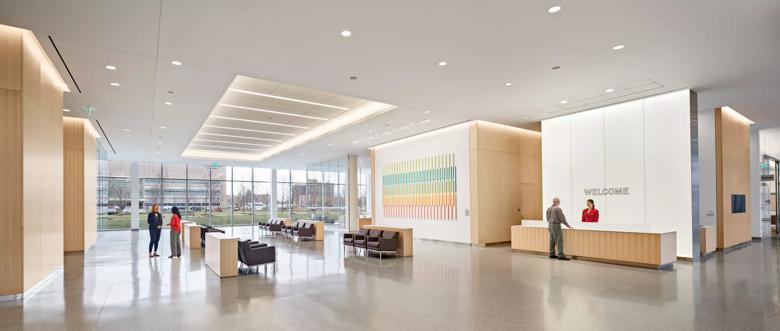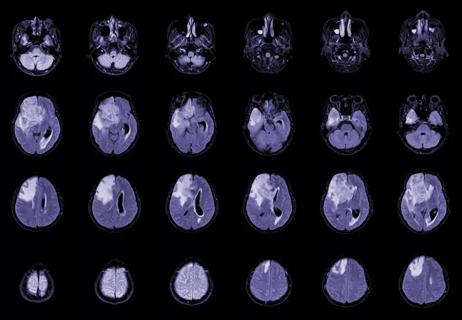A concentration of providers and services improve patients’ experience

Providing multidisciplinary care for patients is the norm at Cleveland Clinic Cancer Center, but the cancer building itself has made the process far more efficient for patients and physicians.
Cleveland Clinic is a non-profit academic medical center. Advertising on our site helps support our mission. We do not endorse non-Cleveland Clinic products or services. Policy
In the past, cancer patients getting outpatient treatment traveled to multiple locations within the old Cancer Center building and among other Cleveland Clinic buildings to see specialists, undergo tests and procedures, and receive medical and social services. Sometimes those appointments were spread over more than one day.
With consolidated offices and clinical facilities and advanced scheduling, Cleveland Clinic Cancer Center minimizes transit and wait times and maximizes convenience. “All of the services we need are set up to happen in the same place,” says Nathan Pennell, MD, PhD, Director of the Thoracic Malignancies Program. “The patients are in one place that’s tailored to their needs and everyone comes to them.”
Lung cancer care provides a good example of how the seven-floor, 385,000-square foot building streamlines operations.
Lung cancer patients who need diagnostic imaging or radiotherapy have access to those services in the lower level — a skylighted, high-ceiling space that contains six linear accelerators, a Gamma Knife® stereotactic radiosurgery unit and a diagnostic imaging suite.
The building’s first floor houses the patient reception area, an expansive hematology laboratory and blood-drawing stations to eliminate waiting lines, a retail pharmacy, and patient services including a café, wellness center, spiritual area, wig boutique and art and music therapy facilities.

Lung cancer patients see clinical specialists and receive chemotherapy on the third floor. There, examination rooms surround a meeting/working area where members of the lung cancer multidisciplinary team, including oncologists, surgeons, radiologists, palliative care providers, oncology nurses and advanced practice providers, can discuss therapeutic decisions and treatment plans. Private chemotherapy infusion rooms, a short walk from the examination area, have floor-to-ceiling windows overlooking a tree-lined lawn.

The second floor contains a dedicated area where patients with lung cancer or other malignancies who are participating in phase I clinical trials receive chemotherapy infusion while being monitored by specially trained nurses and research assistants. The space and staffing reflects Cleveland Clinic Cancer Center’s aggressive efforts to expand phase I clinical trials access for patients.
“We already had good multidisciplinary care, but I think it was a bit disjointed from the patient perspective,” Dr. Pennell says. “While the patient may have seen a surgeon and radiation and medical oncologists and a palliative medicine physician all in the same day, those visits were often spread out — seeing different people and walking back and forth to different places.
“The idea of the multidisciplinary clinic is that the patient is in one room and multiple doctors will see that person back to back and then consult to plan ongoing care,” Dr. Pennell says. In the past those discussions often took place at weekly tumor board meetings.
“From a care standpoint, it is definitely much more efficient for us to discuss the patient while working in the same space and sitting next to each other, Dr. Pennell says, “so that by the end of the day when the patient is ready to leave, he or she has a plan for treatment.”

Timing and type of side effects differ greatly from chemotherapy

Dedicated multidisciplinary teams support 84 ultra-rare cancers

Sessions explore treatment advances and multidisciplinary care

New research from Cleveland Clinic helps explain why these tumors are so refractory to treatment, and suggests new therapeutic avenues

Combination of olaparib and carboplatin results in complete durable response for a patient with BRCA2 and “BRCAness” mutations

Early communication between oncologists and ophthalmologist warranted

Case-based course delves into latest treatment approaches

Long-term relationship building and engagement key to gaining community trust